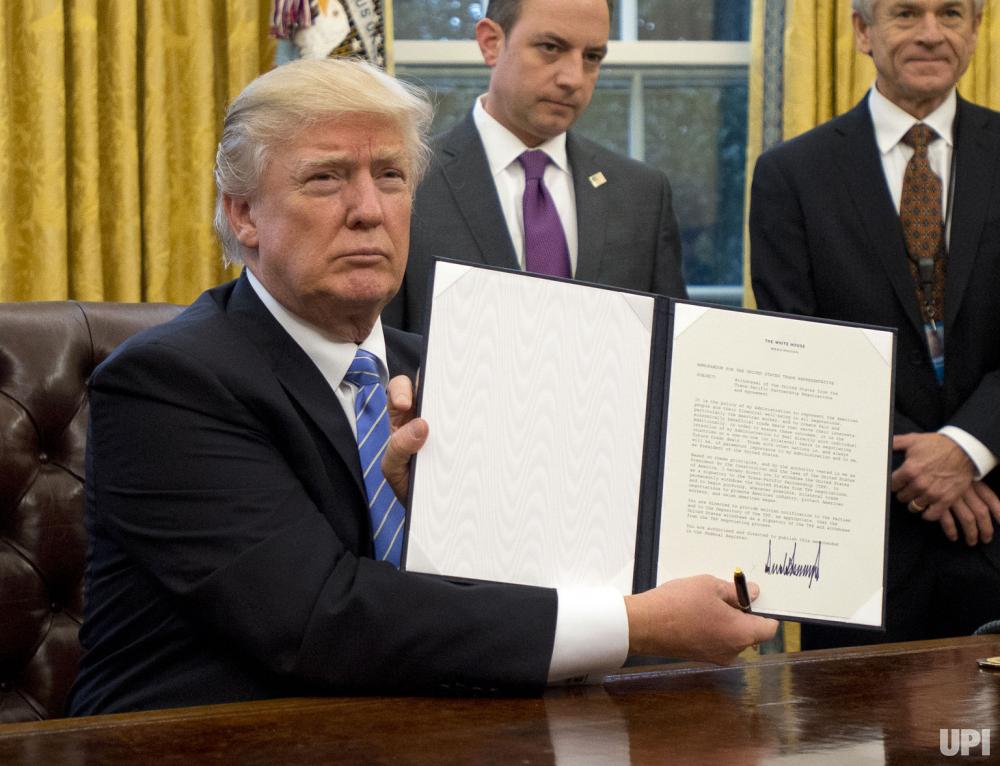Novorossia Today Will Keep You Updated As The President Enacts More ~ In his first week as president, Donald Trump signed a series of executive orders aimed at delivering on the promises that led to his election. Among those campaign pledges that Trump has already addressed: undoing the Affordable Care Act, building the US-Mexico border wall, and lifting federal prohibitions on drilling; Trump is expected to sign a directive banning immigration from Muslim countries as well.

Trump’s administration has also instituted a temporary communication ban on the Environmental Protection Agency and Department of Human Health Services. Although it’s not an executive order, Trump instructed those agencies to stop sending out news posts, specifically on social media.
While his executive orders might seem dramatic or even dystopian, it’s important to recognize that a signature does not necessarily indicate immediate action. In the coming days, President Trump will likely sign more distressing directives, but there’s no guarantee he will be able to fully actualize these orders.
Ahead, check out a running list of Trump’s executive orders that we’ll continue to update as he enacts more.
1. Restricting abortion access
Trump reinstated the global gag order, also known as the Mexico City Policy, that was introduced by President Reagan in 1985. The policy prohibits federal aid to family planning organizations that counsel on or provide abortions.
2. Enacting a federal hiring freeze
Other than in the military or public safety positions, Trump has temporarily frozen hiring for federal agencies with open positions. Trump’s intention is to reduce the size of the federal government workforce over time.
3. Dismantling of the Affordable Care Act
With help from the Republican-held Congress, Trump initiated plans to dismantle Obamacare. On Jan. 23, he signed an order that will “minimize the unwarranted economic and regulatory burdens” of the Affordable Care Act. Essentially, this means that federal agencies do not have to comply with the law if it is fiscally straining.
4. Withdrawing from the Trans Pacific Partnership
Trump rejected Obama’s TPP trade deal and withdrew from the alliance, as he promised to do. His reasoning? Refusing to ratify the TPP might make it easier to keep jobs in America.
5. Enacting a federal regulation freeze
Like the federal hiring freeze, Trump also froze the implementation of all federal regulations currently awaiting approval. Regulations like climate policies that Obama instituted during his final week will be reviewed by Trump’s administration.
6. Renewing formerly banned drilling
Trump signed an order that would immediately renew construction of the North Dakota Access Pipeline that the Army Corps of Engineers halted in November. Additionally, Trump overturned Obama’s rejection of construction of the Keystone Pipeline, which would transport shale from Canada to the Gulf Coast.
7. Restricting immigration
The wall between Mexico and America will be built, according to another order signed by Trump. Responding to the threat of domestic terrorism, Trump is also expected to sign a directive to block refugees from Syria from entering America as well as a 30-day on halt anyone from Iraq, Syria, Iran, Sudan, Libya, Somalia, or Yemen from entering the country, according to New York Times. Syrian refugees will reportedly not be allowed to enter the country for an indefinite amount of time.
*************************************
The 1 Important Thing You Should Know About Executive Orders
During his first few days as president of the United States, Donald Trump has signed 12 executive orders. Many of his executive orders have already caused controversy and raised concerns, including an order that experts say will have serious consequences to women’s health and well-being internationally, as well as a proposal to create a pipeline to carry oil from Canada to the Gulf Coast, which could pollute Native American water resources.
If that weren’t enough, on Jan 25. Trump signed yet another executive order to build a wall between the US and Mexico in keeping with his campaign promise. So what does this all mean? How is Trump allowed to make these demands and set these policies without going through Congress first? Well, it all goes back to understanding what an executive order truly means.
Language in Article II of the Constitution grants every president in the United States “executive power,” which commanders in chief throughout history have used to defend issuing such orders, which might bypass lawmakers who are resistant to them. (The Supreme Court has upheld almost every challenge to these orders.) After an executive order is signed, it becomes a legally binding declaration that must be followed by the government. Because these orders allow presidents so much autonomy, they are usually controversial — yet every single president in history has exercised their power to use them; in fact, more than 13,000 executive orders have been issued since the founding of the United States.
In case you’re worried about how many executive orders Trump has already signed thus far, there is one thing that might make you feel better: executive orders can be overturned by any incoming president.
- Будь в курсе последних новостей и интересных статей, подписывайся на наш канал «NovorossiaToday»
- Be aware of the current events and interesting articles, subscribe to our channel «NovorossiaToday»
- Pour ne rien manquer de la derniere actualite et des articles interessants, suis notre chaine Telegram en direct«NovorossiaToday»







